The last few months have demanded a complete shift of perspective for museums. Almost overnight, cultural institutions across the globe were turned from vibrant settings for the exchange of thought and sharing of beauty to the safehouses of objects.
In Argentina, where sudden setbacks are not uncommon and often lead to creative solutions, alternative online programmes quickly popped up. Yet for all the deserved praise for such initiatives, some of which were brilliant (and are still online on the museums’ websites), nothing can compare to experiencing art in person. Standing in front of a painting. Walking around a sculpture. Making associations between artworks placed near to each other. Or perhaps, for the regular visitor, reconnecting with the works of art you love.
That possibility is now before us once again: museums across the country, including the cultural staples of the capital, have reopened. Under strict protocols, the public has been invited back to the Museo Nacional de Bellas Artes, MALBA (Museo de Arte Latinoamericano de Buenos Aires), Museo Moderno and Fundación PROA, among others. Visitors need to visit each institution’s respective website, where days and time slots can be reserved and you, and the rest of your household, can sign up for a visit.
It is quite an experience – regulations allow for only a limited amount of visitors, which turns each trip into a near private viewing. You can be alone with Rodin’s Kiss or Rembrandt’s Portrait of a Young Woman at the Museo de Bellas Artes. There is time to see and read the fascinating new narrative of MALBA’s permanent collection. Or you could go see the Sergio De Loof exhibit at the Moderno – which gained extra weight because of the artist’s death in March – and is now still on display, as the entire museum programme has been postponed. Or embark, in peace and tranquility, on a walk around PROA’s exhibit Crear Mundos, masterfully showing the broad array of female artists the art space has worked with over the years.
Provided one is not looking for the social aspect of art events, visiting a museum in this new reality can be regarded as something marvellous. Reserve in advance, let your temperature be taken, sanitise your hands, keep your mask on and follow the dots or lines on the floor, or the indications of the security staff – and you will almost have the museum to yourself.
Reinvention and adaptation
Besides reinventing themselves as virtual platforms of and for art during quarantine, the real-life experience of museums has not changed much. Adaptations in curatorial plan have sometimes been necessary in order to be able to guarantee distance between the onlookers – at the Moderno for instance, when searching for Liliana Maresca’s work, I learned it had been taken out, even though the wall text has not yet been adapted. Interactive works have not been replaced though, so the audience is free to activate Julio Le Parc’s Forma en contorsión – but only after sanitising your hands with the spray left to the side the artwork. One temporary exhibit by young artist Santiago Iturralde could not have been more appropriate, even though unintentionally, as the exhibit opened in February: his paintings show museum audiences. People with their phones trying to take pictures of famous art pieces, avoiding the crowd in order to be in it. A shrill contrast to today’s empty museum galleries.
At PROA, which reopened with a new exhibit, Adriana Rosenberg, the museum’s director, told the Times that the effect of the new regulations meant that “we had to drastically downsize the amount of works that we intended to show, which led us to rethink the exhibition.” Curators had to choose different works and developed new angles for an exhibition showing art created by women, with their wide array of visual languages and takes on the world. She points to Marta Minujin’s work Leyendo las Noticias (“Reading the News”), which is a photo-series of the artist dressed up in newspapers, including a newspaper-hood. She pretends to read the news, but she can’t. “We chose this work because of the space limits, but in fact it turned out well, as it is not such a well-known work, and now, for once, it is being shown again,” explained Rosenberg.
The collection-less museum cleverly used its own exhibition archive to build from, and shows works by internationally acclaimed artists including Jenny Holzer, Mona Hatoum and Louise Bourgeois, aside a diverse and interesting selection of Argentine artists, such as Delia Cancela, Liliana Porter, Leticia Obeid and many more, which should be on display more often.
MALBA also re-opened with a new proposal. As you enter the museum, a line on the floor first leads the visitor to the surrealist world of Spanish Mexican painter, Remedios Varos, and then to its newly curated permanent exhibit, which could be read as the new director’s visiting card. Clearly, Gabriela Rangel researched the collection well – there are a host of works on display that had not been shown before. The masterpieces of the MALBA – Frida Kahlo, Diego Rivera, Tarsila do Amaral, Xul Solar and Antonio Berni – are of course still on display, but all placed in a way that invites you to (re)consider the origin of Latin American art. The altar-like entrance centered around Joaquin Torres-Garcia’s Composition symétrique universelle en blanc et noir is flanked by archaeological figurines, whose forms and shapes are unmistakably recognisable in his painting made thousands years later. Placed opposite photos of Leandro Katz’s Catherwood Project – a reconstruction of two British 1850s expeditions to the Maya areas of Central America and Mexico – it seems that this curatorial proposal encourages us to look deeper into our own roots.
The Museo de Bellas Artes did not open with a new take on their collection, despite having one of the largest collections of Latin America, and enough hidden treasures, as their online course on women artists attests. During quarantine, the museum also made catalogues of their exhibits (2016-2019) available online and disclosed an amazing archive of Leon Ferrari’s work, celebrating what would have been his 100th birthday. His Moon looms over you upon entering to see the 16th to 19th century European and 19th century Argentine art, housed on the museum’s ground floor.
For now this is the only floor open, as the museum takes it step by step. Learning from these first visits, the first floor might also reopen. The guards, outnumbering the visitors, make sure one follows the destined route, and distance is being kept – not so much from the artworks, but from the other visitors, if there any at all.
PLANNING YOUR VISIT
-
Museo Moderno, Av. San Juan 350 – https://www.museomoderno.org/en
-
Fundación PROA, Av. Pedro de Mendoza 1929 – http://www.proa.org/eng/tu-visita.php
-
MALBA (Museo de Arte Latinoamericano de Buenos Aires), Av. Figueroa Alcorta 3415 – https://www.malba.org.ar/en
-
Museo Nacional de Bellas Artes, Av. Del Libertador 1473 – https://www.bellasartes.gob.ar/en/










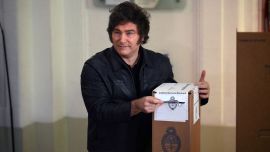
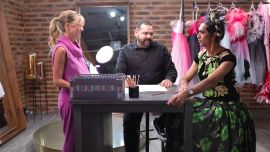


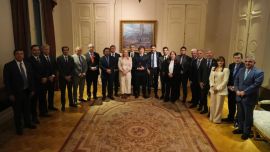


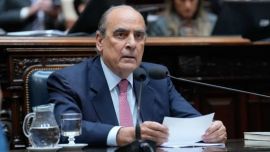
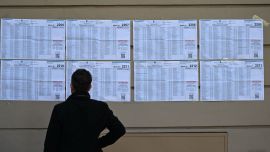
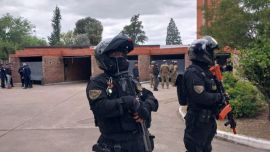

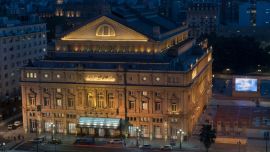
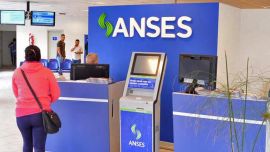
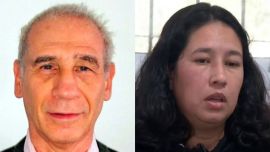
Comments